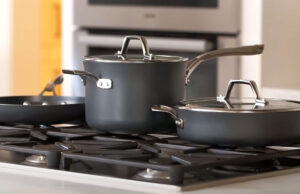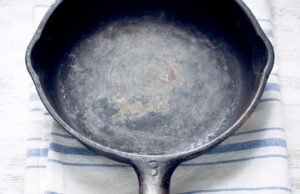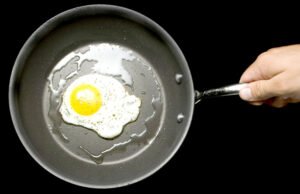As an Amazon Associate, I earn from qualifying purchases at no extra cost to you.
How to Connect Dishwasher Drain Hose to Disposal the Easy Way
You just pulled your dishwasher out, staring at that tangle of hoses, wondering how on earth it all fits. Water pooling under the sink? Gross. That frantic “did I break it?” moment hits everyone. In this article, we’re going to untangle the confusion, make the process smooth, and even a little fun.
Start by turning off power and water for safety. Remove the disposal knockout plug if needed. Attach the hose securely using clamps or connectors to prevent leaks. Make sure the hose runs upward before connecting to prevent backflow. Test the connection by running water and checking for leaks. Adjust clamps as needed. Keep everything tight but don’t overforce it.
Prepare Your Workspace and Gather Tools
Before touching any hoses, make sure your workspace is ready. Clear out the cabinet under the sink and remove any items that could get wet. Safety is key, so turn off the garbage disposal power at the breaker and close the water supply. You’ll need basic tools like a screwdriver, pliers, and possibly a utility knife. Having a bucket or towel handy is smart to catch any drips.
Look at the dishwasher hose and disposal inlet carefully. Identify where the hose will attach and see if a knockout plug is present. Some disposals come with a plug that must be removed first. Double-check the hose length and flexibility. You don’t want a stretched hose or one bending too sharply. Taking time here makes the rest of the process much easier and prevents leaks later.
Make sure the area is well-lit. A simple flashlight can help you see behind pipes. It’s easier to work when you can actually see what’s happening. Lay out your tools in order of use so you don’t fumble around mid-task. Also, prepare a small container to hold screws or clamps. This little organization step saves frustration and makes the process smoother.
- Clear under-sink cabinet
- Turn off power and water
- Gather tools: screwdriver, pliers, bucket
- Check hose and disposal inlet
- Remove knockout plug if needed
- Ensure proper hose length
- Keep workspace well-lit and organized
Remove the Disposal Knockout Plug
Most garbage disposals have a knockout plug blocking the dishwasher connection. Start by loosening the screws around the inlet. Using a hammer and screwdriver, gently tap out the plug from inside. Be careful not to damage the disposal itself. Some plugs come out easily, while others require a little patience. Once removed, check inside the disposal for debris and clean it to prevent clogging.
Keep the removed plug in a safe place in case you need it later. You don’t want it rolling under the sink and lost. After the plug is out, wipe the area clean to ensure a smooth connection. Test fit the hose briefly to see if it aligns without force. This step ensures that when you attach the hose, it goes on easily and securely without stress.
Use a flashlight to inspect the knockout area. Sometimes a small piece of metal remains inside, which can cause leaks or scratching. Smooth it gently with pliers or a file if necessary. Also, check the hose connection size against the inlet. Most hoses are standard, but a quick check avoids last-minute adjustments. Proper preparation here is crucial for a leak-free setup.
- Loosen screws around inlet
- Tap out knockout plug carefully
- Clean inside disposal
- Store plug safely
- Test fit the hose
- Inspect for metal fragments
- Check hose size compatibility
Attach the Dishwasher Hose Securely
Now comes the main part: connecting the hose. Slide the dishwasher hose over the disposal inlet snugly. Use a hose clamp to secure it. Tighten the clamp with a screwdriver, but don’t overtighten and risk damaging the hose. Ensure the hose is not kinked or stretched. A smooth, gentle curve is best for proper water flow.
Check that the hose runs upward before bending down to the inlet. This “high loop” prevents dirty water from backing up into your dishwasher. Once in place, give the hose a slight tug to ensure it is firmly attached. Watch for movement that could cause leaks over time. It should stay snug and secure without forcing it.
Finally, make sure there’s no contact with sharp edges or other plumbing parts. A simple twist or bend can cause premature wear or leaks. If needed, use a zip tie or clip to hold the hose in position. This small step keeps your connection safe and durable for years. Always double-check the tightness before moving on.
- Slide hose onto disposal inlet
- Secure with hose clamp
- Ensure hose is not kinked
- Create a high loop
- Test hose stability
- Avoid sharp edges
- Use clips or ties for support
Connect the Hose to the Dishwasher
Turn your attention to the dishwasher end. Most dishwashers have a small drain outlet at the back. Slide the hose over this outlet and secure it with a clamp. Tighten it just enough to hold it firmly. Check that the hose is routed without bends that block water flow. Proper alignment prevents leaks and ensures efficient drainage.
Some hoses have built-in ridges or connectors for a snug fit. Push it fully onto the outlet until you feel resistance. Inspect the clamp and make sure it doesn’t crush the hose. A smooth, secure fit ensures the dishwasher can drain quickly without any problems. Avoid forcing the hose; gentle pressure is enough.
Run a quick test by gently moving the hose. It shouldn’t pull off or slip. Adjust clamps if needed to achieve a perfect fit. Ensure the hose doesn’t rub against other pipes or corners. The goal is a secure, lasting connection with minimal wear. Taking your time here pays off in a leak-free setup.
- Slide hose onto dishwasher outlet
- Secure with clamp
- Check for proper routing
- Ensure snug fit
- Avoid crushing hose
- Test stability
- Prevent friction against edges
Test for Leaks and Proper Flow
After everything is connected, it’s time to test. Turn on water supply and restore power to the disposal. Run the dishwasher through a short cycle. Watch under the sink carefully for any leaks. Even a small drip can indicate a loose connection or misaligned hose. Catching issues early saves a big mess later.
Check both ends of the hose—the dishwasher outlet and disposal inlet. Tighten clamps if you notice any moisture. Ensure the high loop is intact and water flows toward the disposal without backflow. Listen for unusual sounds that might suggest blockages. Make minor adjustments until everything flows smoothly.
Once the test is successful, dry the area thoroughly. This prevents water damage under the sink. Also, make a habit of checking hoses periodically. Even a small adjustment every few months can extend the life of your dishwasher connection and prevent leaks. Proper testing gives peace of mind and long-term reliability.
- Turn on water and power
- Run dishwasher briefly
- Check all connections
- Tighten clamps if needed
- Ensure high loop is maintained
- Listen for unusual sounds
- Dry area and monitor periodically
Maintain and Inspect Regularly
Even after a perfect installation, regular inspection keeps things running smoothly. Look under the sink every few months for drips, cracks, or loose clamps. Check the hose’s flexibility and remove any debris around connections. Cleaning around the disposal and hose ensures nothing gets clogged or damaged.
If you notice wear or leaks, replace the hose immediately. Modern hoses are affordable and easy to swap out. Also, avoid harsh chemicals near hoses as they can weaken the material. Regularly running hot water and checking for proper drainage helps maintain the system’s efficiency. Small preventative steps prevent expensive repairs later.
Make a habit of inspecting the disposal as well. Clear any debris from the inlet and outlet. Listen for grinding or unusual noises during dishwasher operation. Consistent maintenance extends the life of both appliances and keeps your kitchen mess-free. A little care goes a long way.
- Inspect hoses periodically
- Check clamps and connections
- Clean around disposal
- Replace worn hoses promptly
- Avoid harsh chemicals
- Run hot water for flow
- Listen for unusual disposal sounds
Final Thoughts
Connecting a dishwasher drain hose to your disposal doesn’t have to be scary or messy. With patience, proper tools, and careful steps, you can achieve a leak-free, reliable setup. Following the guide ensures your dishwasher works smoothly and your kitchen stays dry. Regular checks and maintenance make it worry-free. You’ll feel confident tackling this task on your own, saving money and avoiding frustration.
| Task | Key Points | Tools Needed | Tips |
|---|---|---|---|
| Clear workspace | Remove items under sink | None | Keep towels ready |
| Remove knockout plug | Tap carefully | Screwdriver, hammer | Inspect for metal debris |
| Attach hose to disposal | Secure with clamp | Screwdriver, pliers | High loop prevents backflow |
| Connect to dishwasher | Clamp hose properly | Screwdriver | Avoid kinks or sharp bends |
| Test connections | Run water cycle | None | Tighten clamps if leaking |
| Maintain regularly | Inspect hose & disposal | None | Replace worn parts promptly |
Frequently Asked Questions (FAQs)
Is it safe to connect a dishwasher hose to a disposal myself?
Yes, it is generally safe if you follow proper precautions. Turn off the water supply and power to the disposal first. Gather basic tools like a screwdriver, pliers, and a bucket. Make sure you remove the knockout plug properly and secure the hose with clamps. Work slowly, check connections, and avoid forcing parts. Following these steps reduces risk. Many homeowners successfully do this without professional help, but careful attention ensures safety and prevents leaks.
Can I use any hose for the dishwasher connection?
Not all hoses are compatible. Use a dishwasher-specific drain hose, usually 5/8-inch inner diameter. Using a wrong hose can cause leaks, clogs, or backflow. Make sure the hose length is sufficient to reach the disposal without sharp bends. Inspect the hose material to ensure it’s durable and flexible. Proper hoses withstand heat, detergent, and water flow, keeping your dishwasher safe and efficient. Using the correct hose avoids problems later.
Do I need to remove the knockout plug?
Yes, most garbage disposals come with a knockout plug. Without removing it, water cannot flow from the dishwasher into the disposal. Carefully tap it out with a screwdriver and hammer. Check for metal fragments to avoid clogging. Store the plug in case you need it later. Skipping this step can prevent proper drainage and lead to leaks or backups.
Is a high loop necessary for the hose?
Absolutely. The high loop prevents wastewater from flowing back into the dishwasher. Run the hose upward and secure it under the countertop before connecting to the disposal. This ensures gravity keeps water moving in the right direction. Skipping this can cause odors, slow drainage, and potential contamination. It’s a simple but critical step for hygiene and proper function.
Can I overtighten the hose clamps?
No, overtightening can damage the hose or inlet. Tighten just enough to hold the hose securely. Overcompression can crack the hose, causing leaks later. Always check that the hose is snug, without kinks or folds. Properly tightened clamps maintain a secure connection without stressing the hose material. Gentle pressure is enough for a lasting seal.
Do I need tools to test the connection?
Testing mainly requires running the dishwasher and watching for leaks. No special tools are needed, though a flashlight helps see under the sink. Make sure water flows correctly, and inspect both ends of the hose. Tighten clamps if you spot drips. This simple test ensures everything is functioning before leaving the setup unattended.
Is regular maintenance important?
Yes, regular checks prevent leaks and clogs. Inspect hoses, clamps, and connections every few months. Clean debris around the disposal and hose. Replace worn hoses immediately. Hot water runs help maintain flow, and listening for unusual sounds signals potential issues. Maintenance extends the life of your dishwasher and disposal, preventing costly repairs.
Can I connect multiple appliances to the same disposal?
Generally, yes, but follow manufacturer guidelines. Ensure each hose has proper connections and check for backflow prevention. Avoid overcrowding the disposal inlet. Secure hoses with clamps and maintain high loops. Multiple appliances can work efficiently if installed carefully. Improper connections may cause clogs, leaks, or appliance damage.




